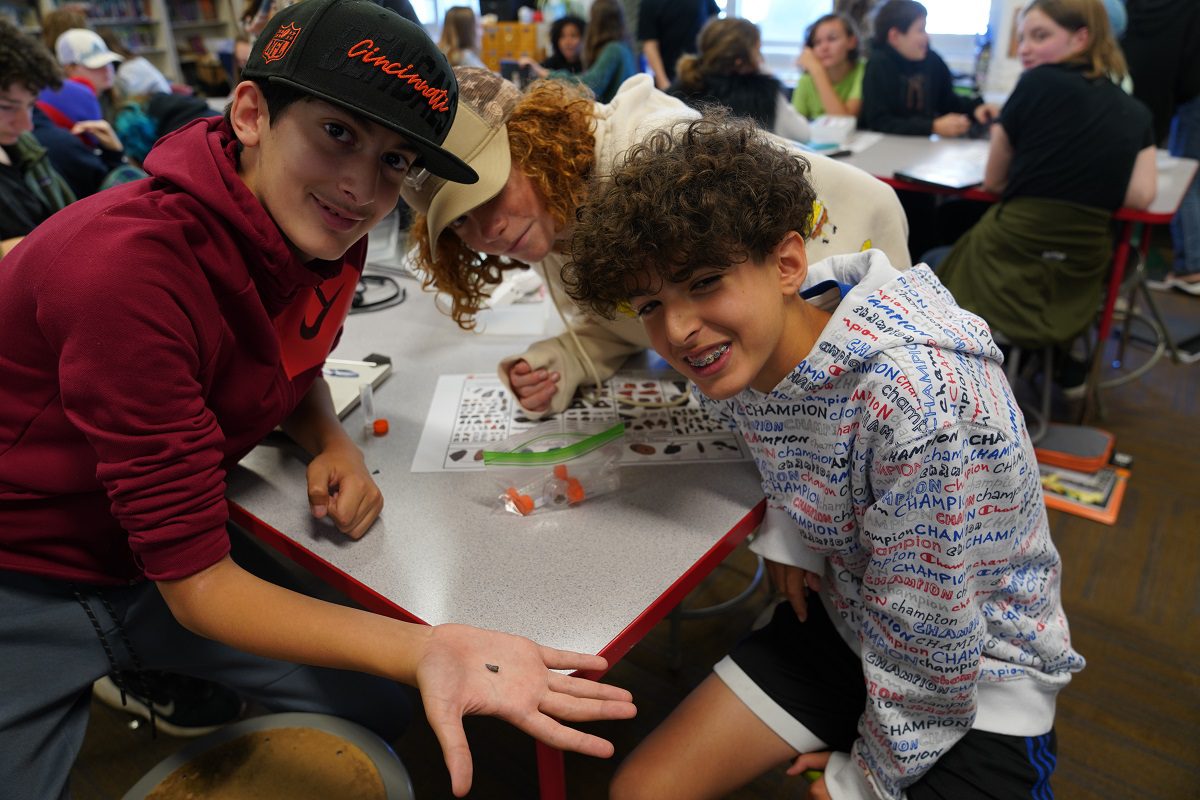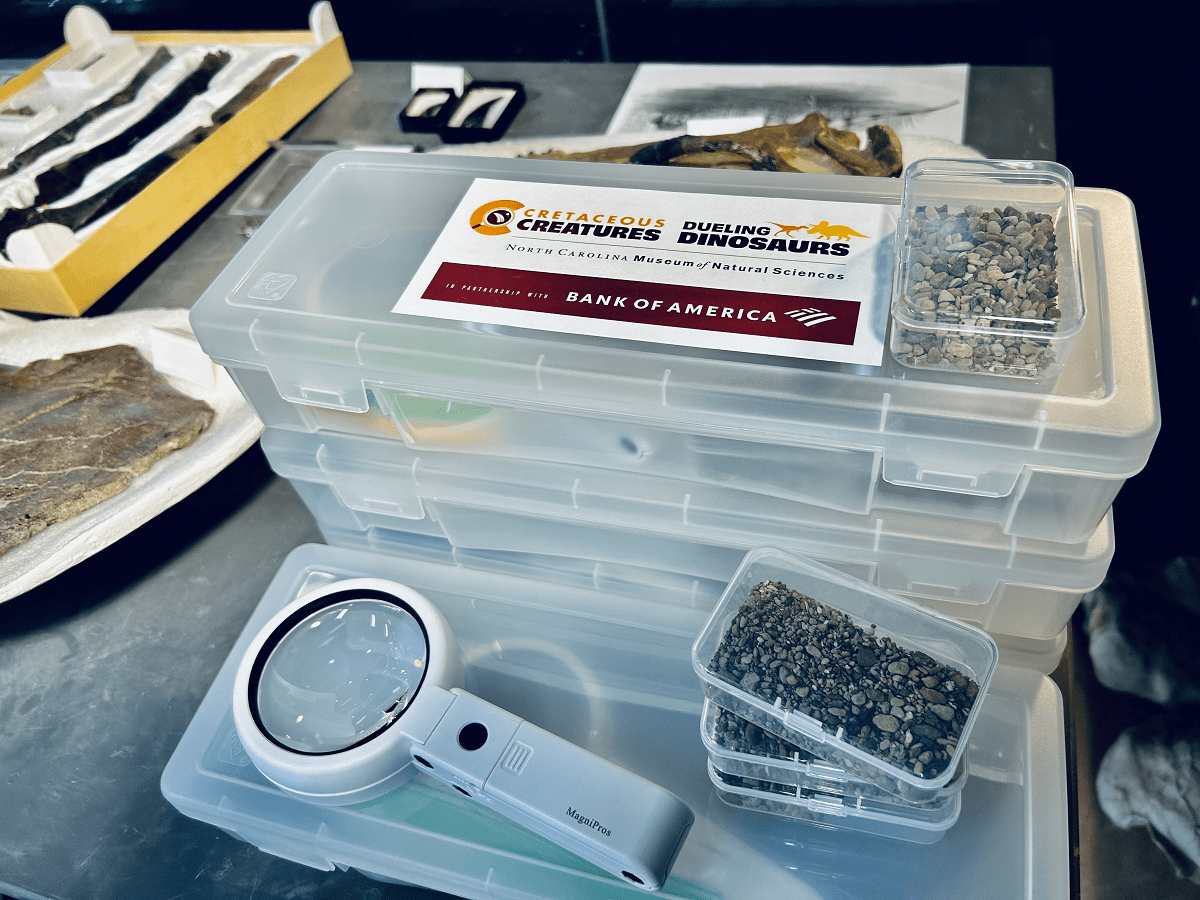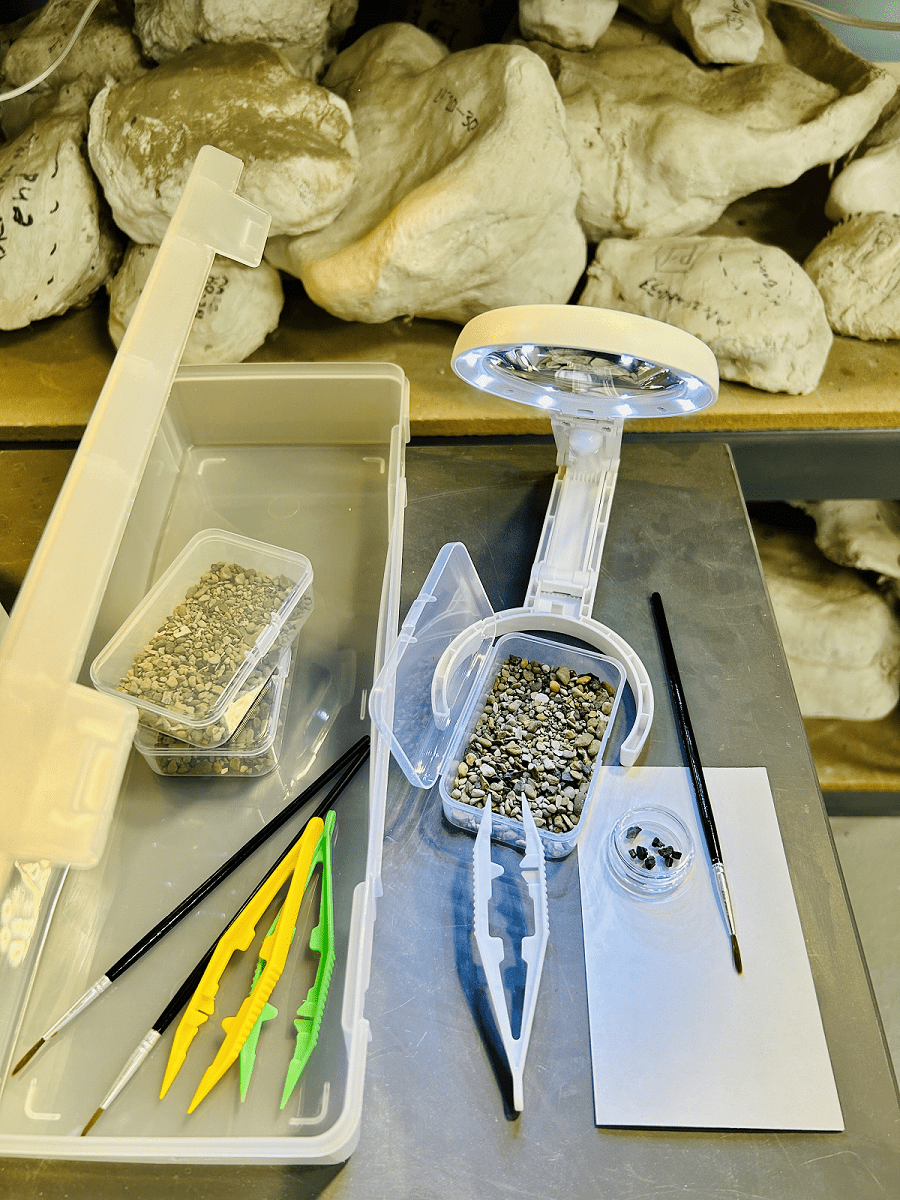
More than 4,500 eighth graders during this school year have been helping the North Carolina Museum of Natural Sciences identify hundreds of microfossils.
In its first year, the Cretaceous Creatures public science project, a part of the upcoming “Dueling Dinosaurs” exhibit at the museum, has provided tools and training to 55 classrooms in 32 counties in the state, Project Coordinator Dr. Elizabeth Jones told Coastal Review.
Supporter Spotlight
Fully funded by Bank of America, teachers are given lesson plans, presentations, videos and kit materials at no charge, giving students an opportunity to discover fossils and make identifications.
The kits are made up of small, rectangle boxes containing microfossils, a lens, tweezers and paintbrushes, all tools used in the field. Working in teams of three, each student gets their own box to make sure everyone has equal access, Jones said.
The “Dueling Dinosaurs” exhibit, which is currently under construction at the museum in downtown Raleigh, includes the skeletons of a Triceratops and a tyrannosaur in what appears to be a predator-prey encounter “rapidly buried in a single event” 67 million years ago. The new exhibit will allow visitors to watch researchers study the specimens still entombed in sediment from the Montana hillside where they were discovered.
Jones, a postdoctoral research scholar at North Carolina State University and historian of science, explained that the sediment the students are studying is from the Hell Creek Formation in Montana, near where the dueling dinosaurs were found, and is about 66-67 million years old.
For the 2023-24 school year, Jones said the hope is to reach classrooms in all 100 North Carolina counties. Educators can register now on the Cretaceous Creatures website to join the project.
Supporter Spotlight
Jones explained that the soil from the site is special because it contains “teeny, tiny fossils, or microfossils,” which are small bones, teeth, shells and scales of the ancient animals that lived around the time of the dueling dinosaurs.

The microfossils “tell us about their ecosystem as it existed back then, just before the end of the Cretaceous, and the extinction of all the nonavian dinosaurs,” Jones said. Nonavian dinosaurs are all dinosaurs except birds.
Jones said the Cretaceous Creatures team worked with N.C. State University web developers to create a training module and a fossil discovery module that has digitized videos, images and rotating videos of all the possible different microfossils they could encounter.
There are close to 50 different possibilities of what the students may find in their little box of soil. The students work through a multiple-choice program that asks questions about the fossils to try to get to the correct answer, she explained.
The students record their findings in an online database and send the fossils back to the museum.
“The process of identifying fossils is part of the process of learning about fossils. We have strategic questions in place to get the students to look at certain features that are unique or perhaps shared amongst other fossils in order to help them figure out what they might be looking at,” she said.
“The fun part is we get to analyze what they identified for accuracy, and update any of the IDs if we need to, and then we catalog everything into the museum’s paleontology collection,” Jones added.
The eighth graders so far have correctly identified about 1,500 fossils.
“It’s looking like they’re getting it correct about 40% of the time, which is actually pretty remarkable considering they’ve never seen microfossils before. They have a limited amount of time to learn and try to identify it. And also, identifying microfossils can be pretty hard because they’re super, super tiny,” she said.
Eventually, the students’ findings will be available on an online database for all researchers to access.
Jones said the teachers have been providing feedback on the program, such as what worked, what didn’t work, what they would like to see more of through a survey.

“And luckily for us, the feedback is overwhelmingly positive. Everything seems to be working pretty smoothly,” she said. “We’re getting extremely good feedback in that the teachers can take all these resources and execute it pretty easily,” but also, it adds another element. “We’re not just sending the fossils, so the kids can do stuff with it, but they’re contributing to a bigger part of the research process and that they have felt like it’s really cool.”
After analyzing the data from the students, the Cretaceous Creatures team sends a report back detailing how many and what kind of fossils the class identified, “And then we give them some fun facts about the different ancient fish or lizards or dinosaurs or mammals,” Jones said.
They chose eighth grade students because a lot of research shows that this is a prime age to increase interest in the sciences, but it’s also a prime age to lose interest in science, so “we’re getting them at that sweet spot,” she said.
The program meets educational science standards for eighth grade’s evolution and fossil units. It gives them a “unique and authentic experience that might tap into that either increasing or decreasing interest in order to help retain it in their later years.”
Jones said this is one of the few public science projects that involve students, or the public, handling fossils.
“We know that paleontology is one of the most popular of the sciences among the public and has been for a good 200 years,” she said.
There are thousands of public science projects but there are really only a handful that actually involve students or the public in directly handling fossils, taking measurements, making identifications, or analyzing the data in a way that scientists actually use for their own research purposes.
“We’re probably the biggest one in terms of scale, and we’re expanding,” Jones said.
The plan for year two is to be in eighth grade science classes across North Carolina specifically. In year three, they hope to send the project out to schools in different states, and then in the fourth year, the intention is to go international and collaborate with schools in a couple of different countries.

Jones, who has been project coordinator for about a year and a half, said the idea for the project came from Dr. Lindsay Zanno, Head of Paleontology at the Museum of Natural Sciences and Associate Research Professor at N.C. State. The project has been in the making for several years and came along with the acquisition of the dueling dinosaurs specimen.
The lab staff head west in the summer for field work in New Mexico, Utah and Montana and have access to the microfossil sediment. There are thousands of fossils and not enough people and not enough time, and one of the focuses of the lab is not just talking to the public about science but having them participate and contribute to the actual research.
Zanno told Coastal Review that the Cretaceous Creatures program is an opportunity to experience science firsthand.
“In designing this project, we wanted to give kids all over North Carolina the chance to be a part of our scientific team. These students will get to make real discoveries, do real science. The data they collect will become part of the museum’s permanent collections,” she said. “We want them to experience the thrill of discovery for real, to know what it feels like to discover something no one has laid eyes on before. This is the best part of being a scientist.”







